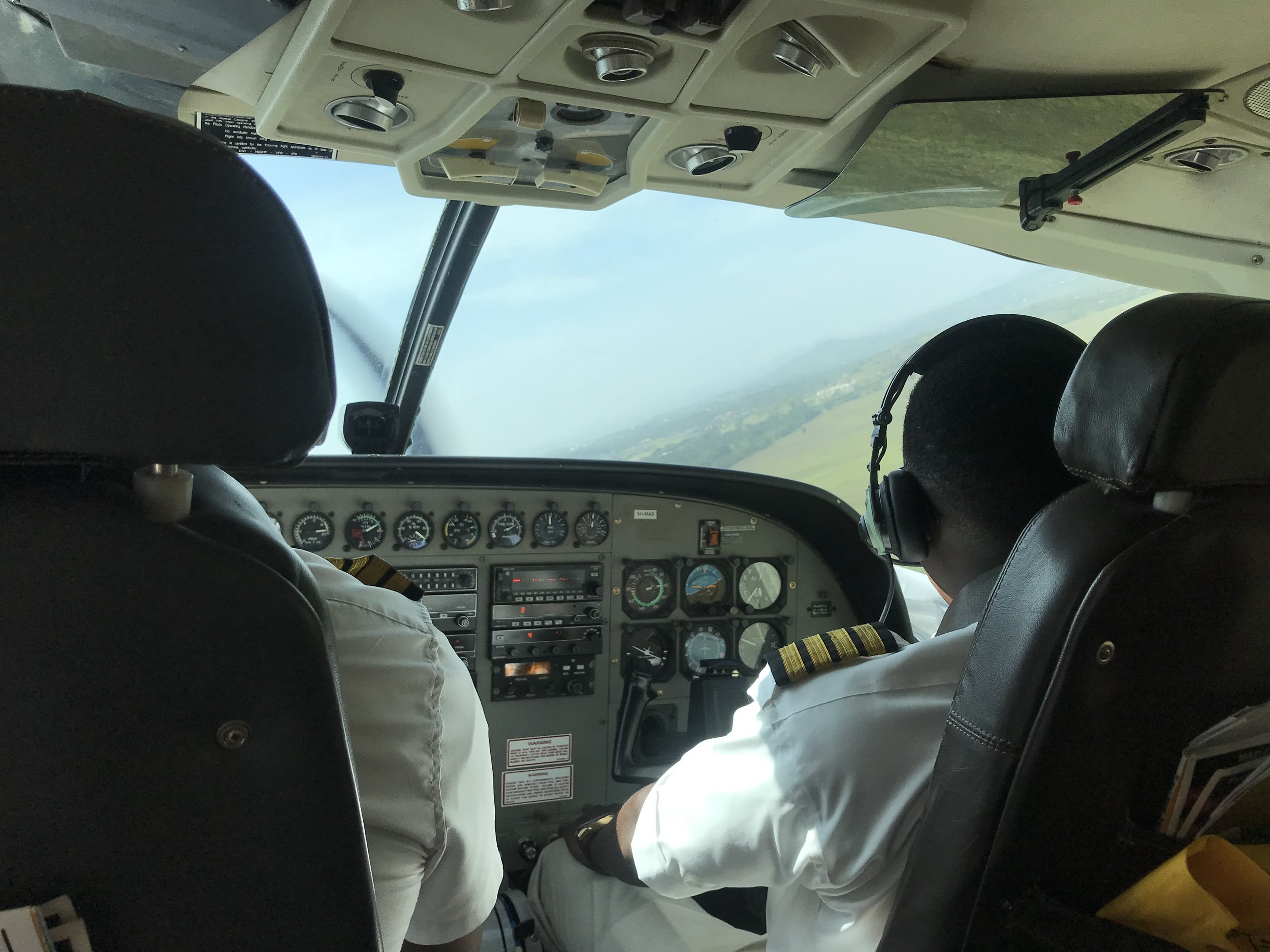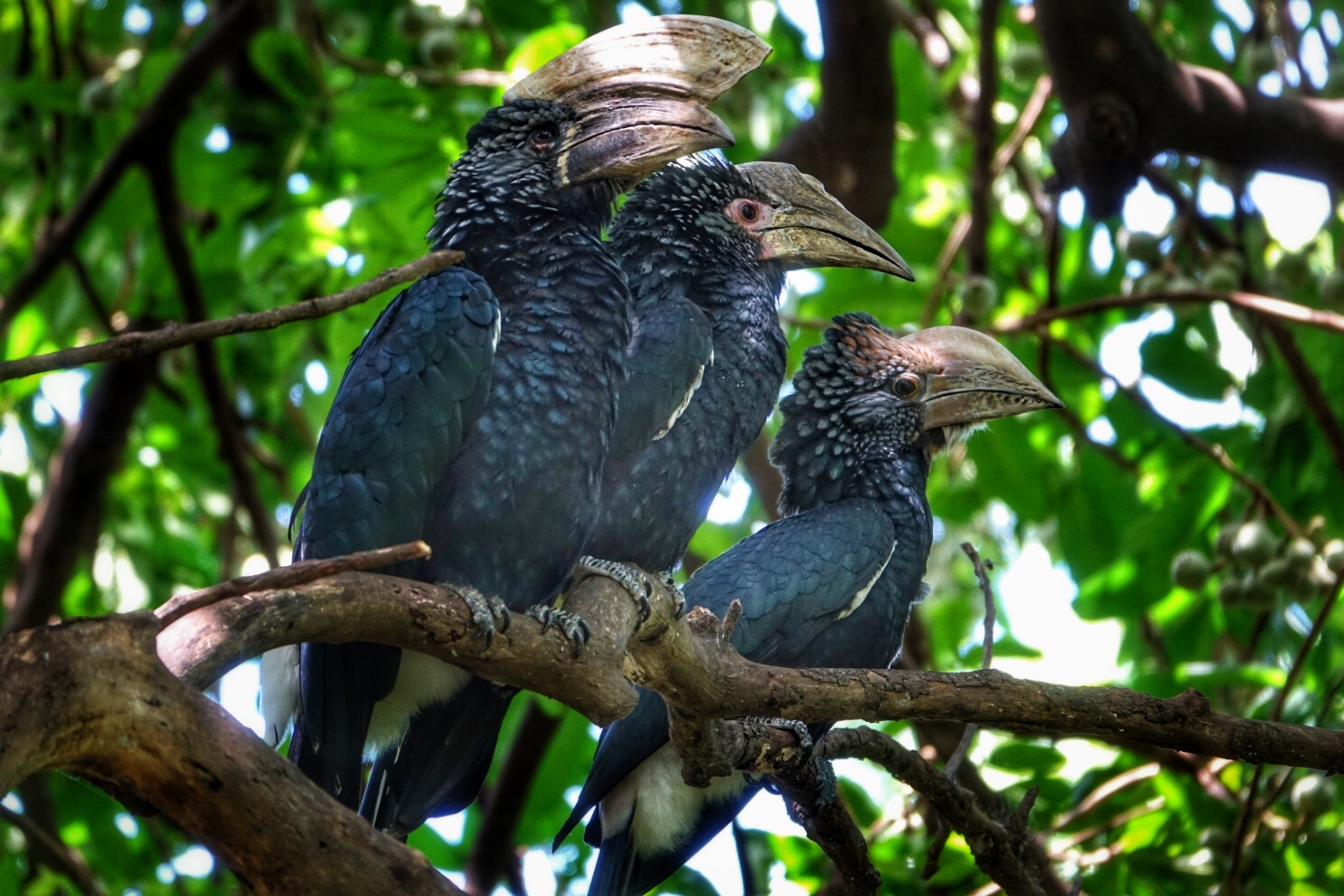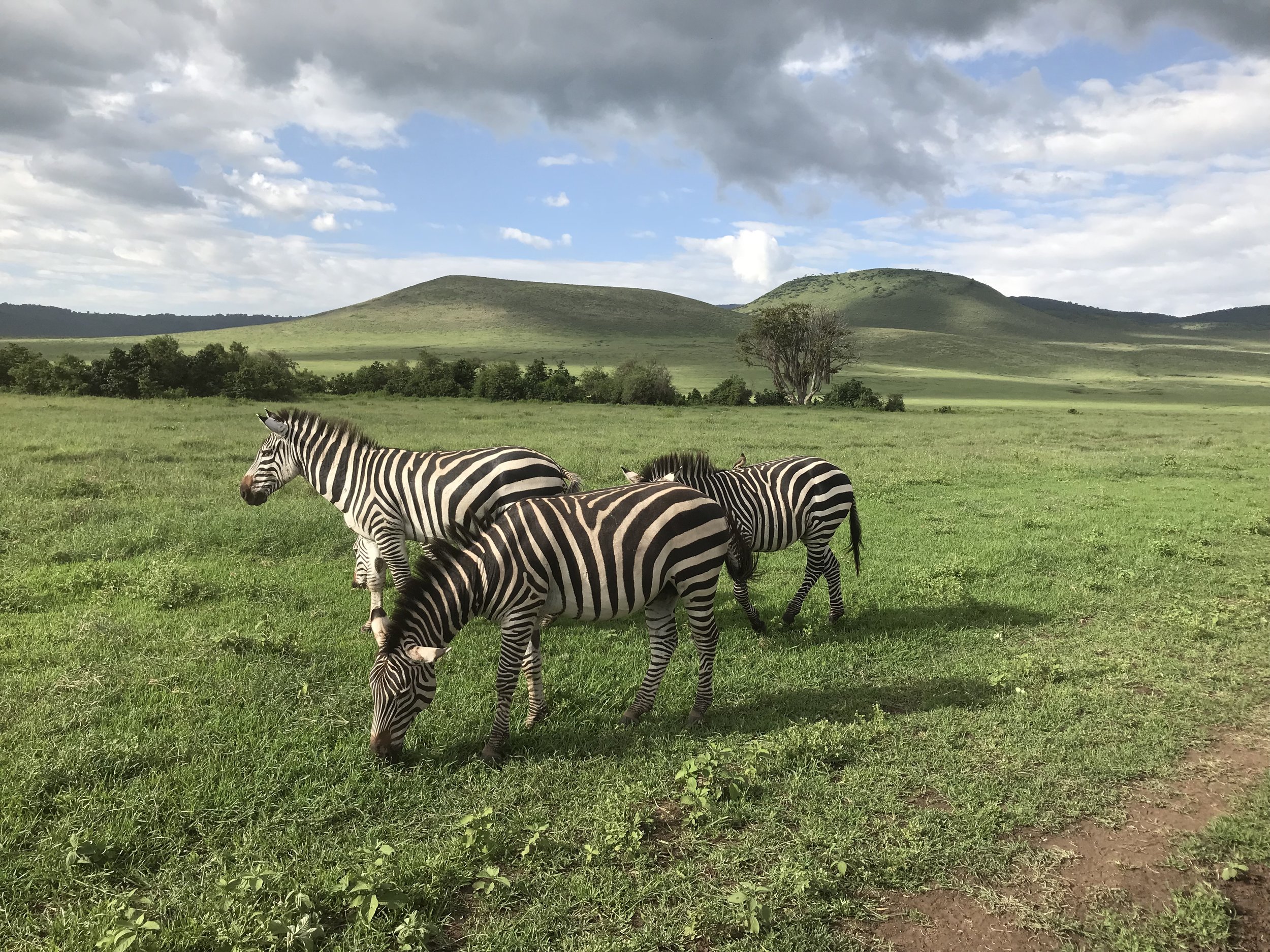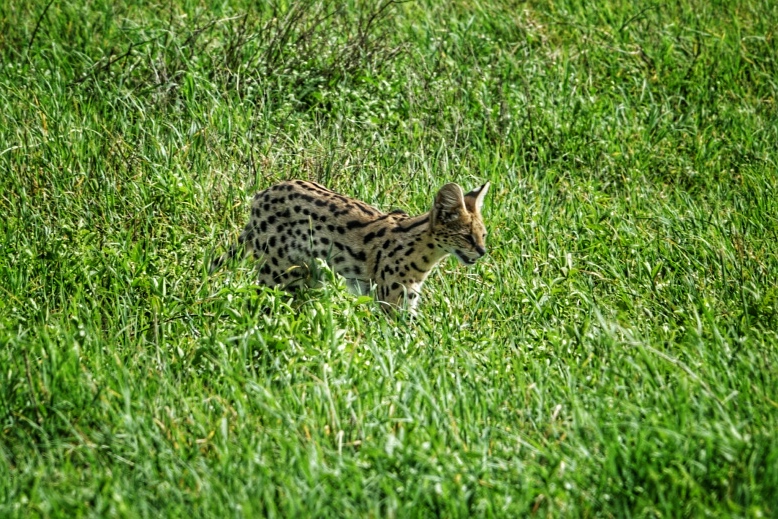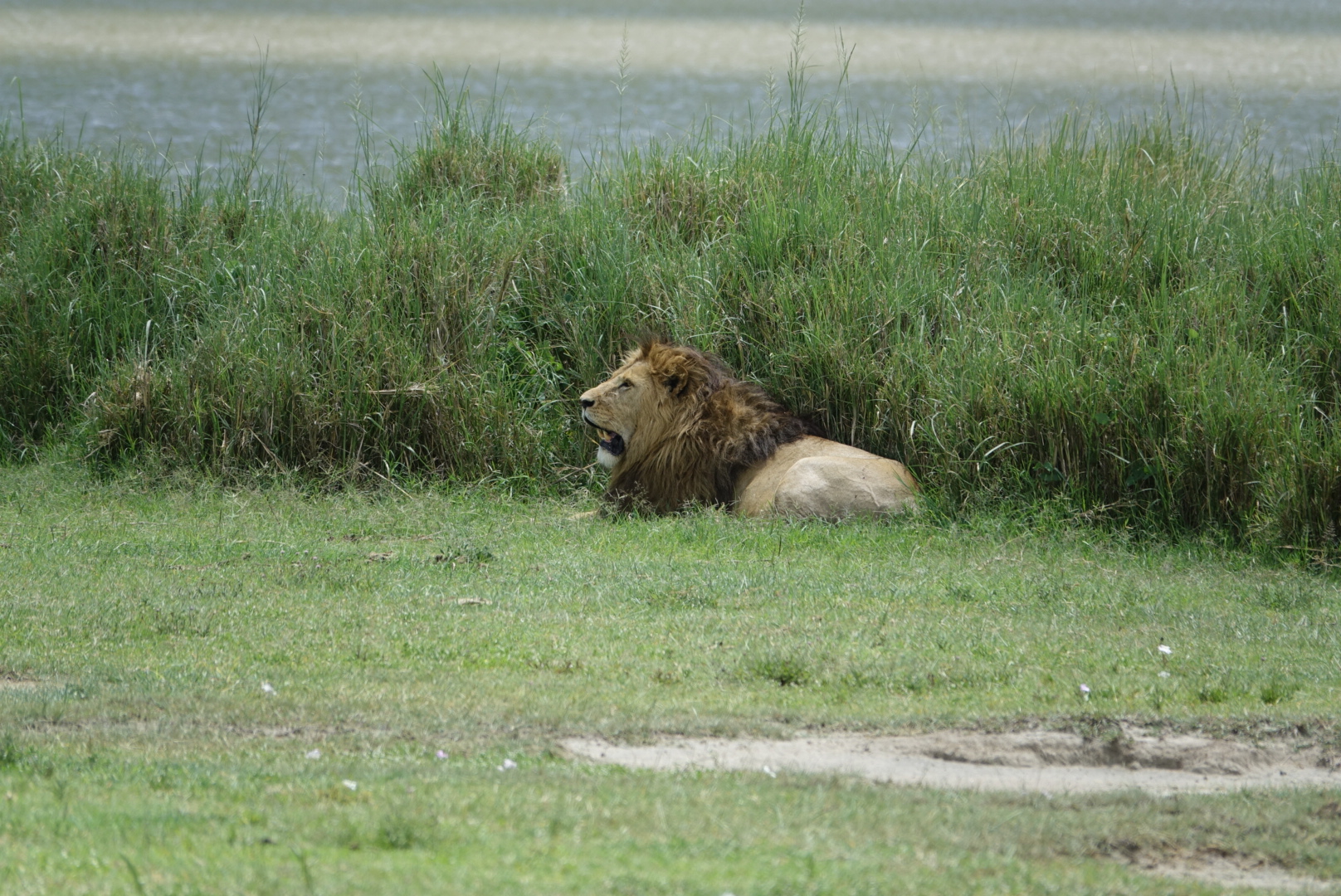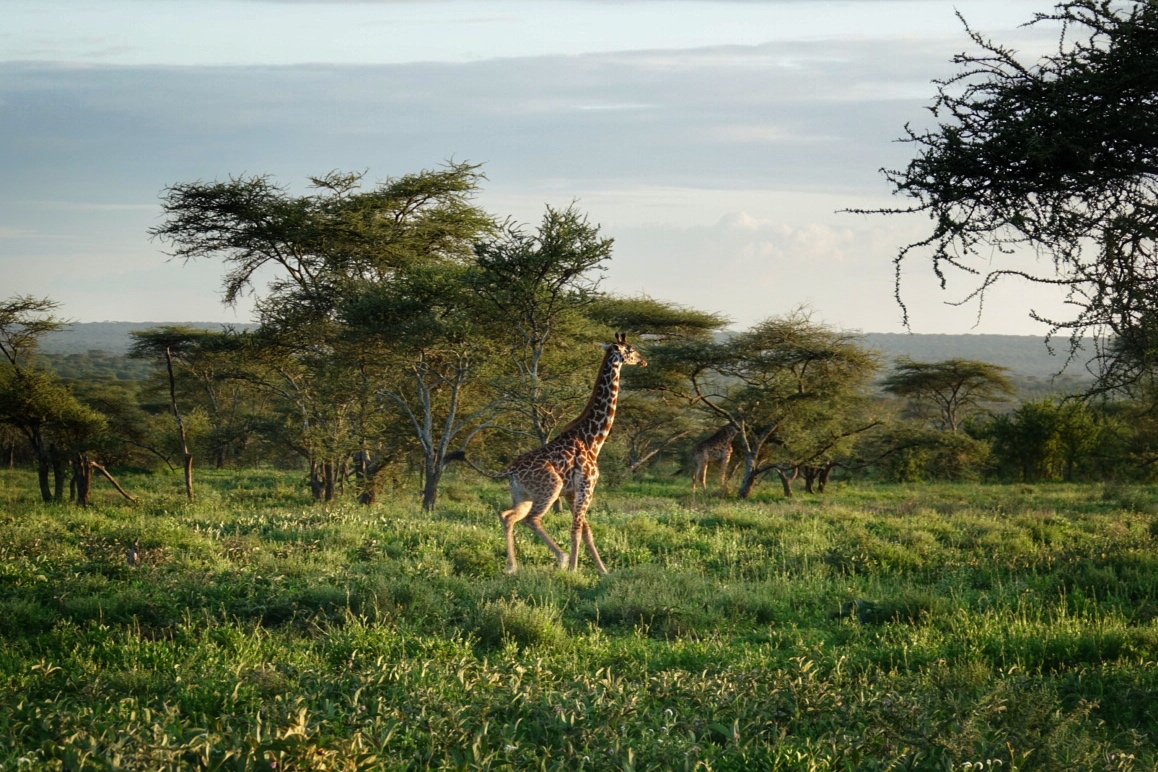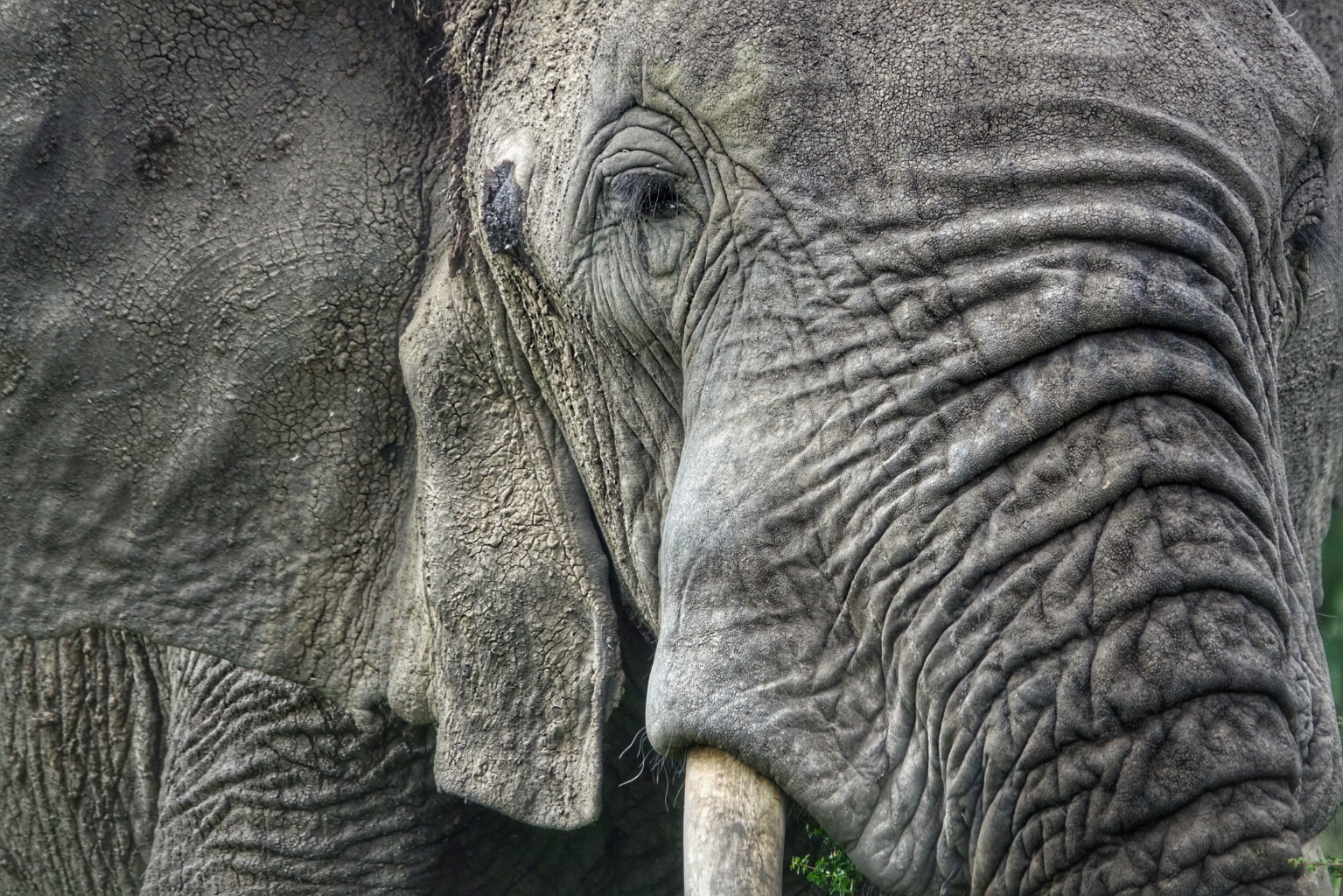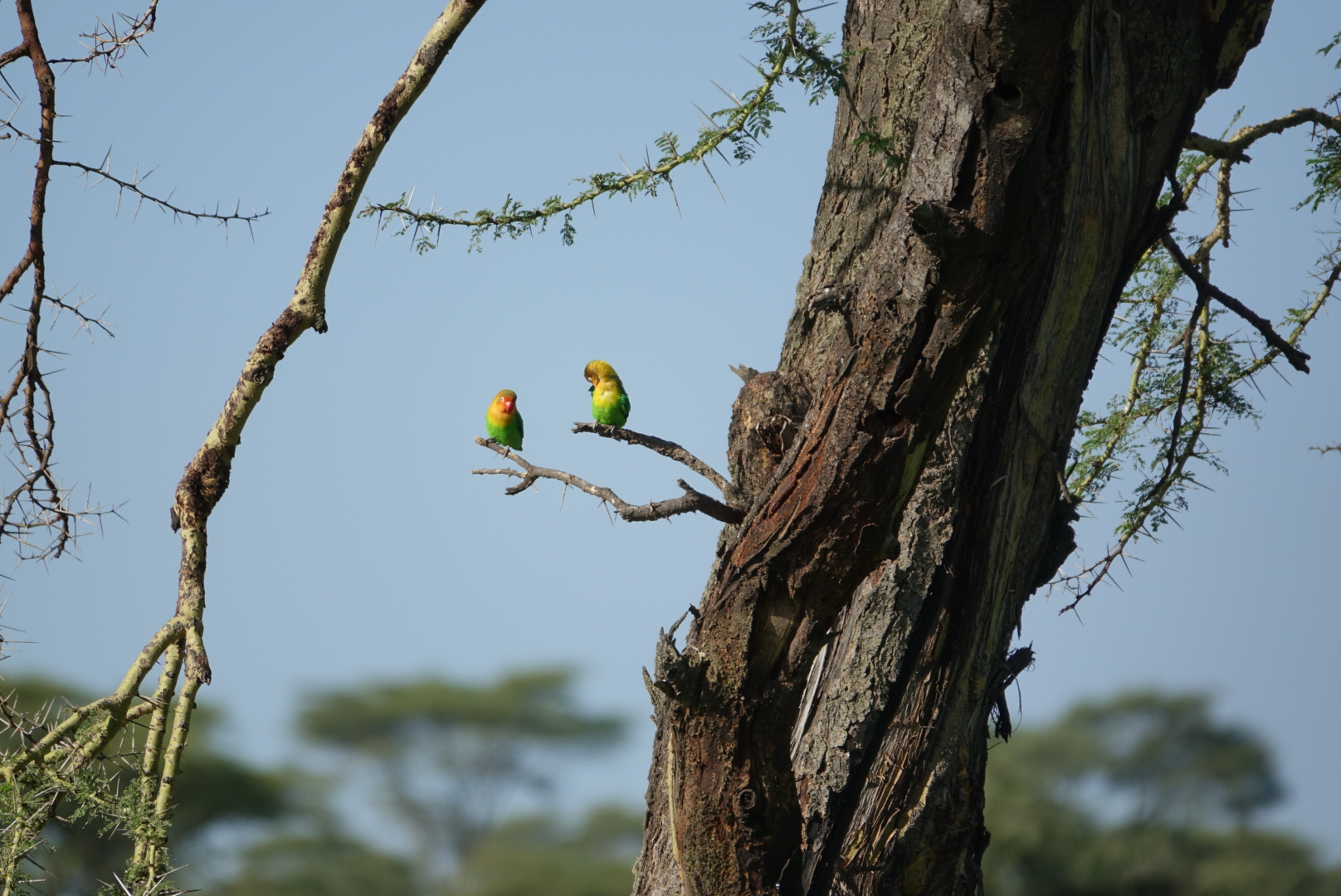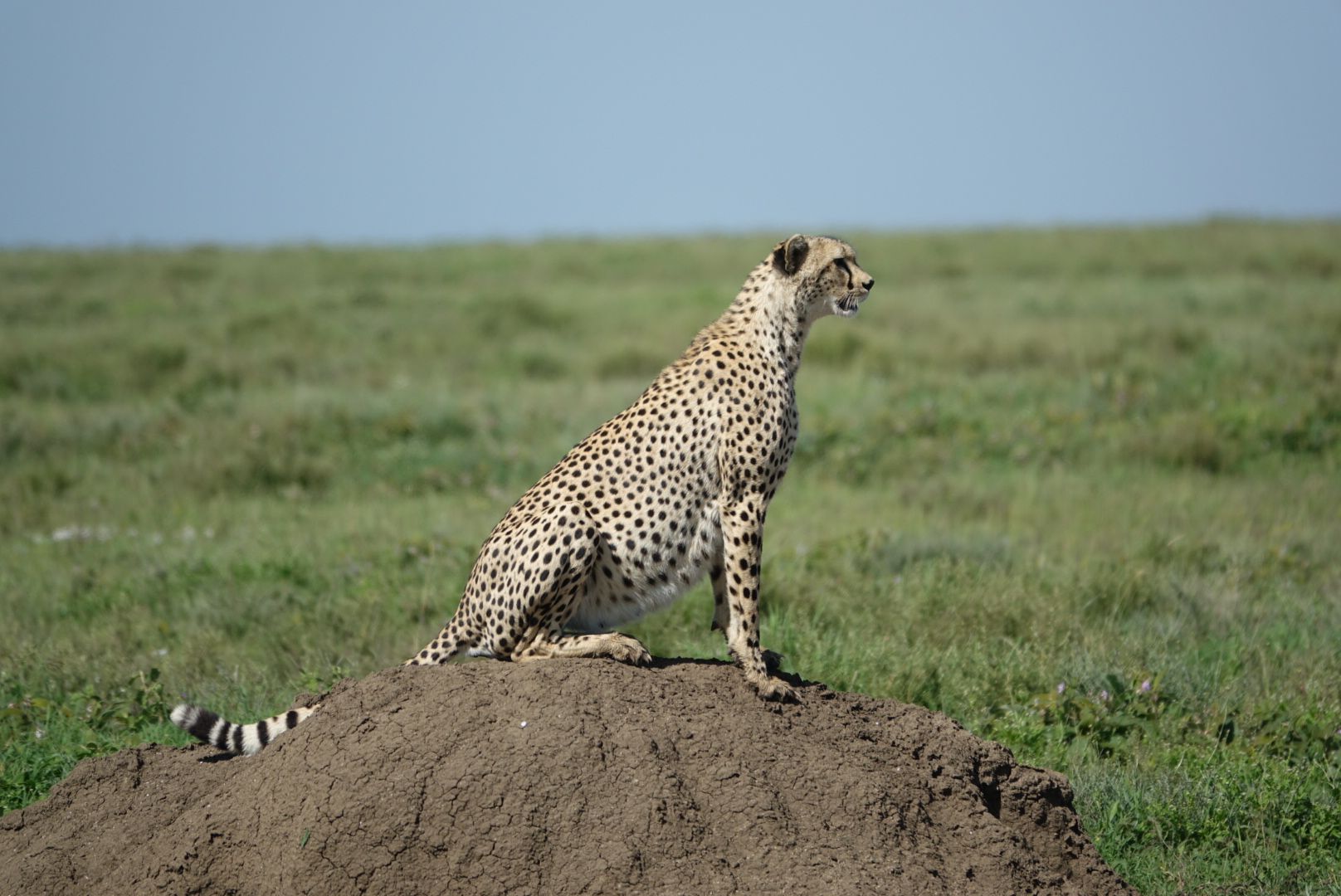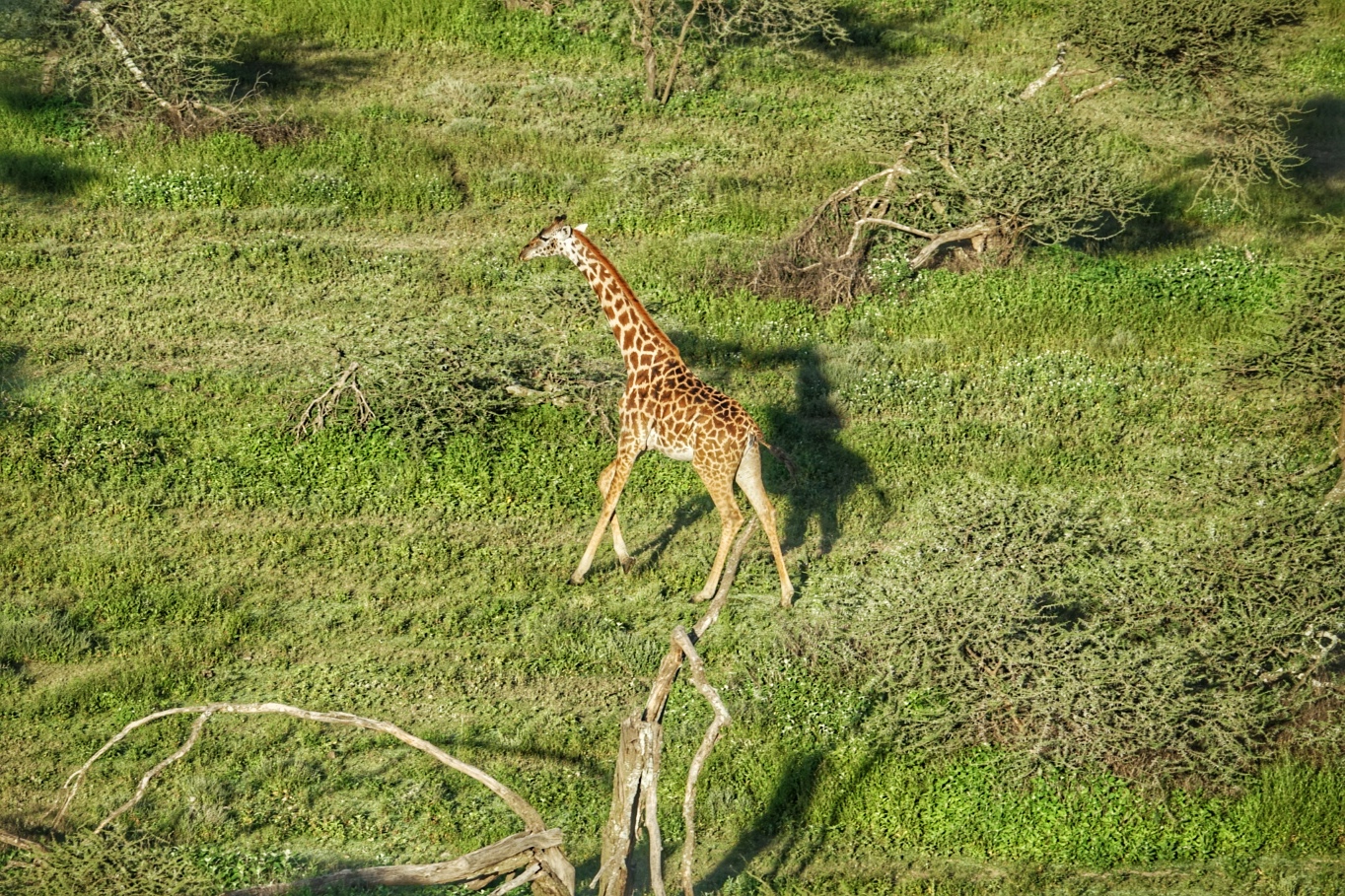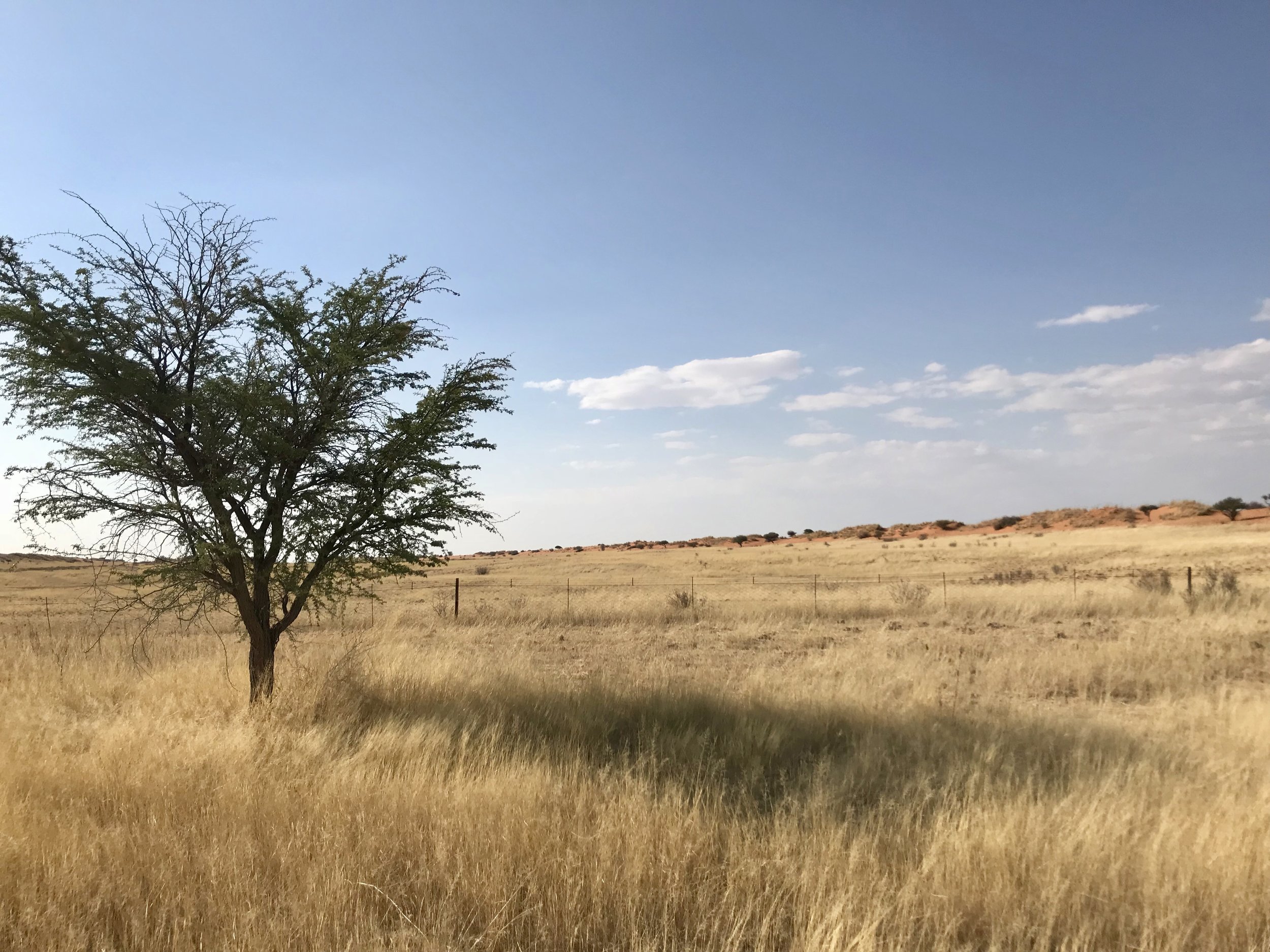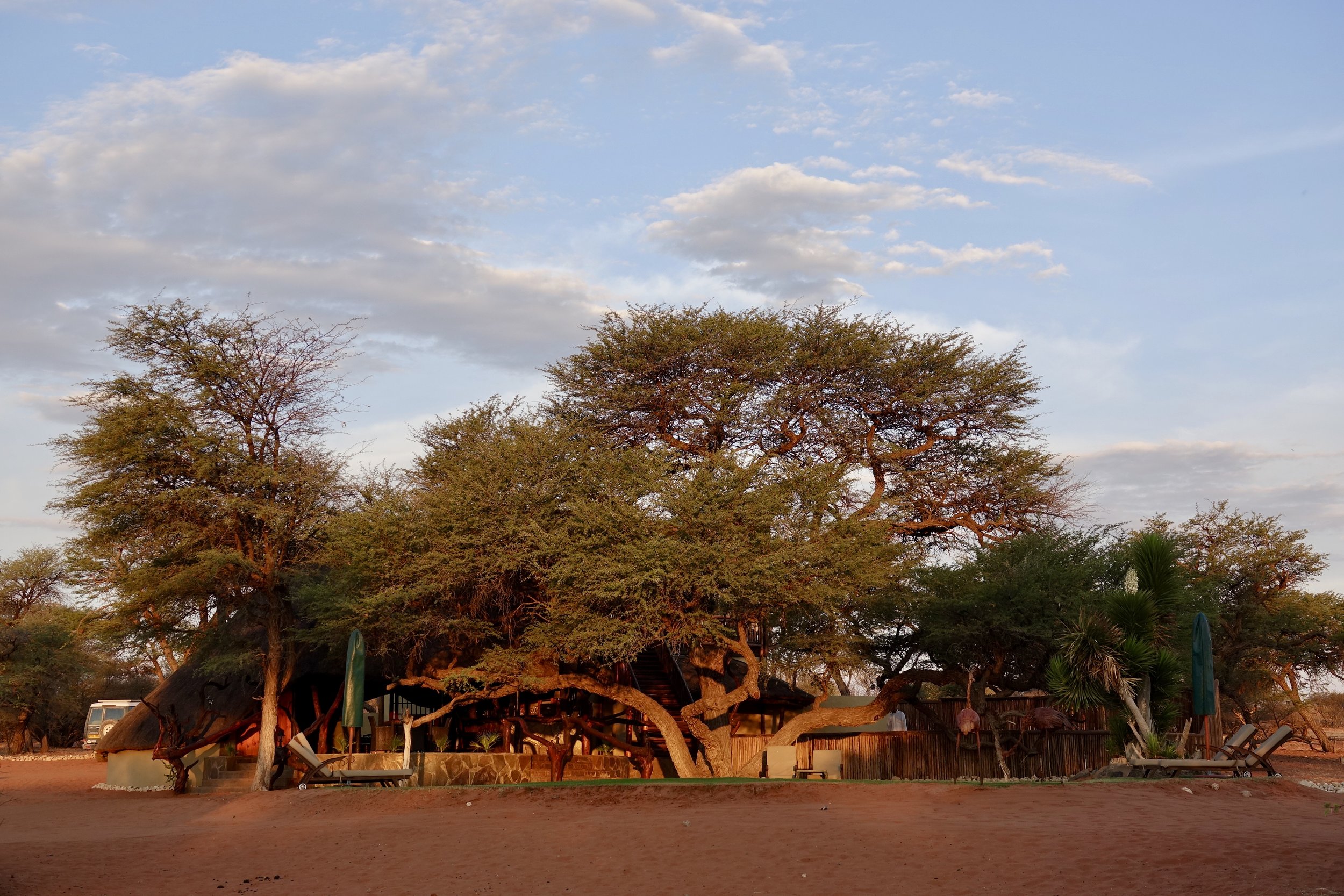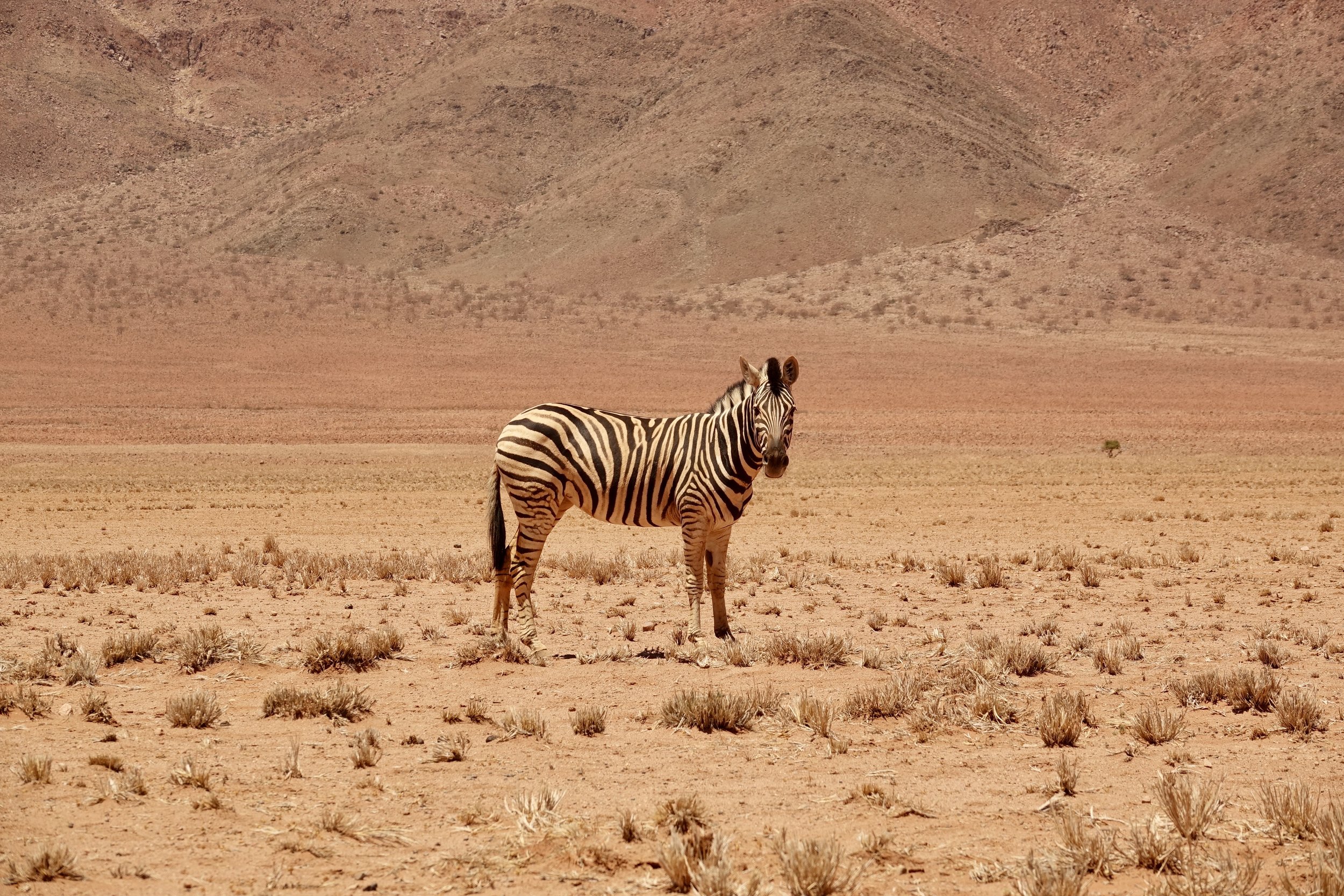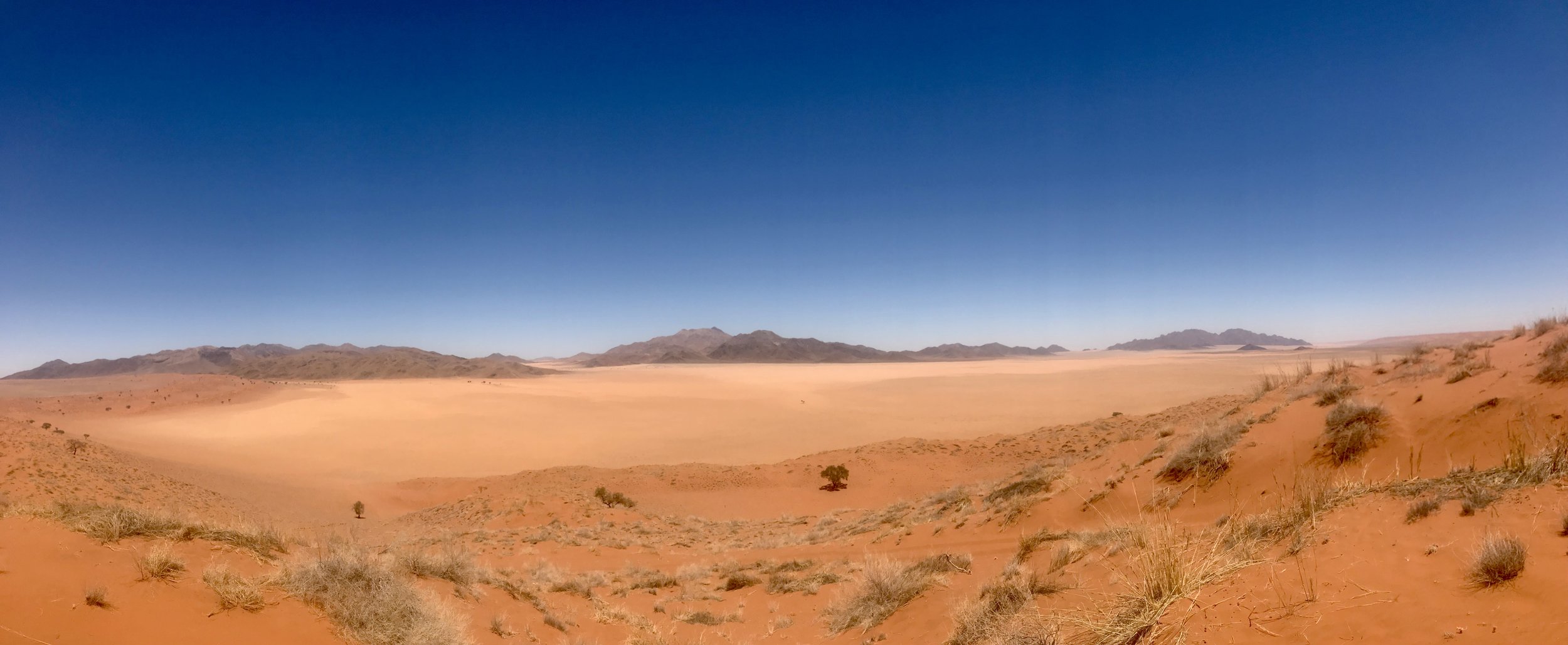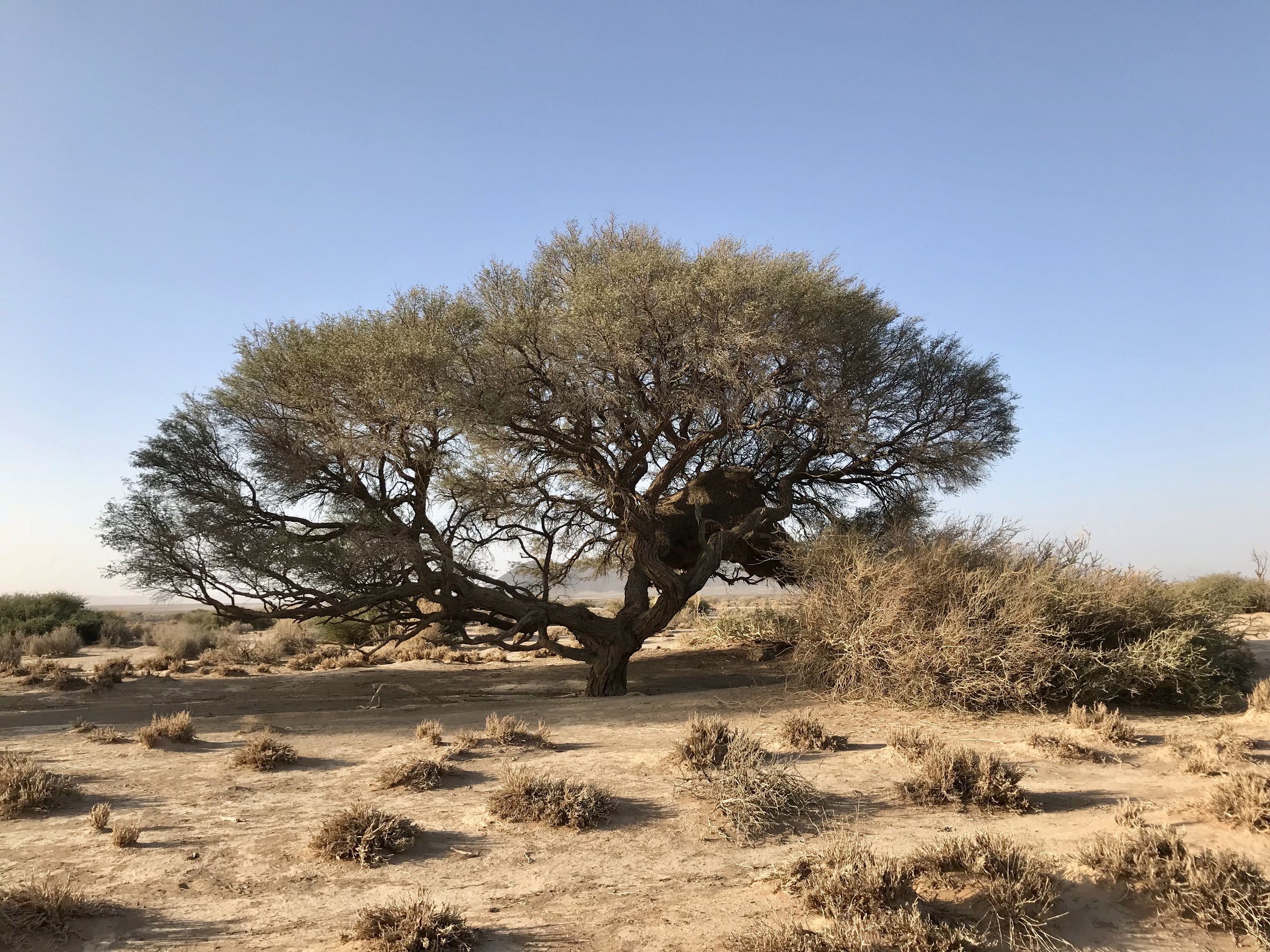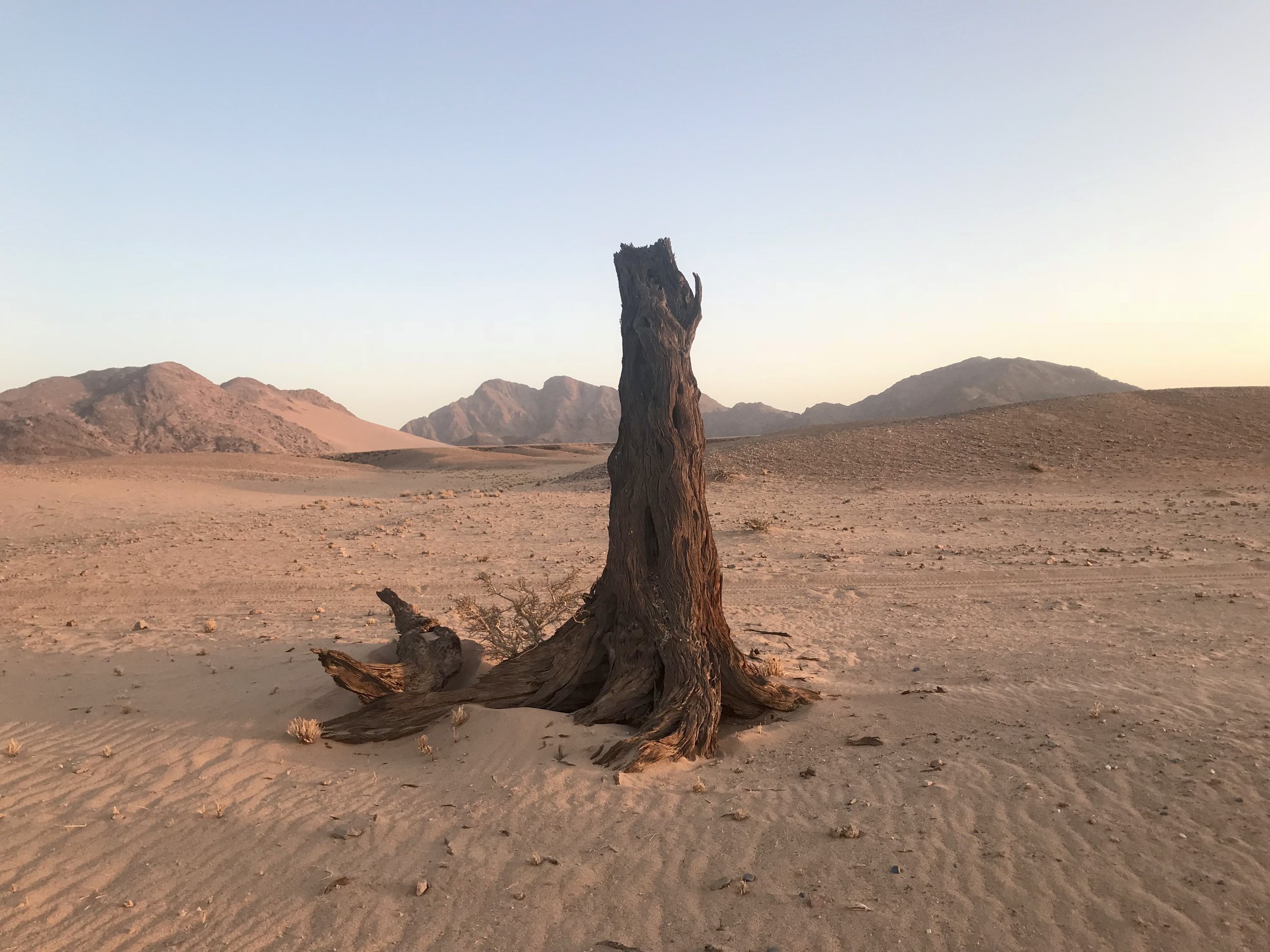24.01.2019 | Lake Manyala, Ngorongoro Crater
After breakfast and a windy night in the hotel, head towards the Arusha Airport, from where I fly by bush plane to the East African Rift Valley. A fantastic view of the landscape below awaits me on the approximately 30 minute flight.
There Joseph awaits me, with whom I visit Lake Manyara National Park together. The small national park is known for its diverse habitats, from swamps near the shallow soda lake, forests, open grasslands, hot springs, to the mountains of the Great Rift Valley. The park has become famous for its climbing lions. Nowadays, this phenomenon is very rare. It is also home to buffaloes, elephants and all the other typical representatives of East African wildlife: Maasai giraffes, zebras, warthogs, hippos, mongooses, honey badgers, porcupines, hyenas, wildebeest and impala.
In the park, most baboons from all over Africa, some family associations are up to 200 animals. For bird watching, this national park is one of the best in Africa, with nearly 400 species living here. From Lake Manyala we continue the East African Rift Valley up to my new accommodation - driving time is about 3 hours. The Sanctuary Ngorongoro Crater Camp is located on the broad edge of the famous Ngorongoro Crater in a sparse wooded area, providing an ideal starting point for pre-game and post-game game drives in the Ngorongoro Crater.
Tired of the first day and the warmth of the campfire I go to sleep. The nights are cold compared to the high temperatures during the day.
24.-26.01.2019 | Ngorongoro Crater
Early the next morning we start our drive to the crater floor. The Ngorongoro Crater is a collapsed crater of a volcano that exploded millions of years ago with a width of 20 km and up to 610 m of forested high edges. There are no single craters in the world with similar numbers of animals: zebras, buffaloes, lions, rhinos and elephants, gazelles, gnus, waterbucks, elands and other antelopes, warthogs, leopards, hyenas and jackals.
Immediately with the first warming sunbeams we meet two lionesses lying in the grass. Close behind them, three little boys stretch their heads out of the tall grass. It is perfect light and together we enjoy the warmth and the beginning of the day. A short time later we see jackals annoying the wildebeest and hoping for a small piece of the placenta left over from the birth of the kittens. In the early afternoon, we watch as a large bull elephant on the water, surrounded by high reeds, frightens his head and in the same moment a male lion cranes his head out of the grass in surprise. Angry about the unplanned visit and the disturbance of the siesta rest in the cool reed, the lion trots off. Here is the elephant the stronger. Two black rhinos in the distance get to know each other and we can observe how these rare animals treat each other tenderly and shyly. We see eagles, buffaloes, gazelles and in the early evening a serval cat happily playing hide-and-seek with a gazelle.
On the way home we stop at a nearby Maasai village. Short talks and sightseeing of the village. In the evening in the camp I enjoy the silence by the fire and look forward to the flight towards Serengeti.
26.-30.01.2019 | Serengeti, Kichakani
In the early morning of the 26th of January, we finally visit the famous Serengeti (in the Maasai language called "the endless land"). Joseph takes me back to the Manyara Airstrip, where I fly the bush plane to the southern plains of the famous Serengeti National Park. The oldest national park in Tanzania offers varied landscapes and vegetation on an area of approximately 14,700 square kilometers. They range from the grassy plains in the south, to an acacia savannah with rivers in the central area, over the hilly and more wooded areas in the north, to the swamp forests in the so-called "western corridor", which is dominated by the Grumeti River. The Serengeti is classified as a UNESCO World Heritage Site and is home to the world's largest wild herds of ungulates. In the north, the Serengeti is bordered by the Masai Mara in Kenya and to the south by the Ngorongoro Game Reserve. The landscape in the south is characterized by the endless flat plains with sporadically rising head (small rocky hills), which are a draw for lions and leopards. In the period from January to March the big migration takes place here. With about 1.5 to 2 million wildebeests, zebras, gazelles and other animals, migration is one of the greatest natural spectacles on Earth. During this period many young animals are born. The cat's activity is therefore particularly high during the day.
At this station, I stayed at the Sanctuary Kichakani Camp. The mobile tender camp in the Hemingway style moves with the herds of big migration. Emmanuel will be my guide here and he is already waiting for me to go on a game drive in the late afternoon. We are not lucky enough to see a fantastic landscape and a beautiful sunset. The evening I spend in front of the tent and enjoy the breathtaking view of the wide plain in front of me.
On January 27, I wake up early and have a quick coffee before heading out with Emmanuel. Just minutes from the camp, a young leopard lady is in the middle of the road, jumping up in surprise and shyness, quickly seeking cover in the nearby tall dense grass. This discovery is especially noteworthy as leopards are usually not found so close to the camp. It will take us a while to reach the open grassland. I enjoy the sunrise and how slowly the heat rises. I see a big bird of prey on a tree and we are fortunate enough to meet a tree-sitting martial eagle, one of the largest eagles in Africa. He has killed something and is about to eat, but is disturbed by a downing loud and wild screaming Secretary Vogel. We watch the two excited and wait, if this could develop a fight. But they are too shy and the eagle sits safely on the tree. On the onward journey, we encounter a single male lion and accompany him for a while, past zebras and giraffes, until he retreats himself into a bush. A little later, a cheetah is on the hunt, but breaks off a short time later and lets the gazelle escape. The cheetah leaves us tense and with slight disappointment. We leave in the afternoon and try to find it again. In fact, we meet the animal - but only dull and tired from the heat lying in the grass.
The next morning, it goes again in the open Plains. A secretary bird tells us good morning in the first rays of sunshine. Directly across from a tree are two Verreaux Eagle owls, staring at us from their big eyes. Shortly thereafter we take a break and have breakfast in the wide grassland. Large groups of giraffes in the distance with little cubs. A loud scream arouses our attention and we discover a young cheetah male calling for his companions. He jumps on the branches of a dead tree skeleton and with a searching look he looks across the distance. We leave him behind and after a while we meet a sleepy lion - breathing heavily because of the already so hot air. Scattered hyenas look after us on the way and due to the coming migration also more and more growing groups of zebras and wildebeest. We also meet the already familiar cheetah again, still looking for prey. On the afternoon drive, an old bull elephant joins us and in the middle of the grass not far away a cheetah mother with three young, about 3-4 months old. We stay and enjoy the moment.
The 28th of January will be a full day trip into the Serengeti. Giraffes, giraffes and more giraffes. A beautiful rare moment when we encounter the otherwise shy Lovebirds. As if from nowhere we meet a short time later on a lion group on the hunt. The kids sit in a group not far away from the huntresses, who are cleverly sneaking up to a group of impalas - a young lion school. The hunters attack from 3 sides - but are unsuccessful. Despite the failure, all run together in the nearby bush- Apparently there is the rest of the last hunt. A hissing and roaring begins and here and there flashes a bloodied mouth from the bush.
We continue into the wide country and stop at a small river. Little by little, elephants come in large groups, led by a leader. Some argue and fight, here and there a tree is knocked over. We count up to 100 animals - I have never been in the midst of so many animals. We have lunch on an old ranger post. On the way back to the camp then past elephants, giraffes - look again at the lions group and arrive at the camp for sunset.
30.-31.01.2019 | Serengeti, Kusini
The last night of my trip I spend in the neighboring Sanctuary Kusini Camp. It is beautifully situated on a hilltop on a rocky plateau and offers a fantastic view of the surroundings.
On the 30th of January we start again early. Giraffes welcome us in the slowly emerging sunlight. In the middle of the landscape sits a small grass owl and looks surprised to us. Shortly thereafter, an African wildcat, which is otherwise almost only active at night. Also, we encounter a group of lions on this day. A male animal is known because it does not carry a typical mane. A pregnant female cheetah crosses our path. Soon we will meet the signs of big migration. Wildebeest and zebras everywhere - a bellow and a rattle. Loud wheezing and cries of zebras. Waiting at a waterhole we watch the action. I spend lunch at the new camp. What will be remembered is the courageous wild honey badger that gets in our way on the way back. In the late afternoon we observe a leopard in the tree and soon after again admire the big herds of migration.
On the last day it means getting up in the middle of the night - a hot air balloon ride over the Serengeti is planned. The starting point is about 2 hours away from the camp - we drive through the darkness and here and there eyes light up out of nowhere. With the sunrise, it goes up and we glide over the wider grassland. Elephants, giraffes and, of course, large groups of wildebeest and zebras. Above a lake we observe flamingos from a great height and marvel at the beauty of this place. Emmanuel is waiting for me after the landing and we leave for the last game drive of my journey. We drive past a group of lions, who lazily bear the midday heat lying on the water. Again encounter three male lions that come surprisingly close to our car and even use the shade to escape the sun. One of the three has clear signs of fighting. Since the lions are too curious, we continue and I get to see as a farewell gift once again one of the rare leopard. Lying in the middle of a tree and enjoying the shade, the animal lolls and finally jumps on the floor and disappears into the tall grass. I say goodbye. It means saying goodbye to the wild animals and the African expanse. A vehicle takes me to the Serengeti South Airstrip in the afternoon and I fly back to the Kilimanjaro airport in the bush plane.


